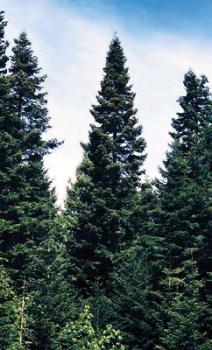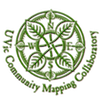Common name
Grand Fir
Latin name
Abies grandis
Hulkemel’em name
T’a'xwulhp
Identification
Grand fir is a tall, straight tree that can grow up to 80 m tall and 90 cm in diameter. The young bark is smooth and grey brown with resin blisters and becomes darker brown, thick, and scaly with age. Grand fir has flat, 2-4 cm long needles with rounded tips. The needles, which lie flat on skinny twigs, are glossy dark green on the top with two horizontal white stripes on the underside and smell of citrus when crushed. The cones are yellowish green, cylindrical and around 5-10 cm long. [1] [2] [3]
 [4]
[4]  [5]
[5]  [6]
[6]  [6]
[6]
Cautions
Branches can be mistaken for the extremely toxic yew tree, and therefore should only be harvested for consumption with absolute certainty.
Distribution
Grand firs grow in relatively low elevations and prefer deep, well drained alluvial soils. They are moderately shade tolerant and they like dryer climates with less than 150 cm of annual rainfall. Grand firs are commonly found in the coastal and interior forests of southern British Columbia and are often mixed in with western red cedar, black cottonwood, western hemlock, Douglas fir, red alder, and Sitka spruce [1]
Ethnobotanical uses
Grand firs have been used by the Indigenous people on the coast and in the interior for thousands of years. The Kwakwaka’wakw people used grand fir boughs in rituals for scrubbing and purification, branches were woven into headdresses and costumes, and the bark was mixed with stinging nettle to form a bathing tonic. The Hesquiat used the fir as incense and the young pitch to treat baldness and act as a deodorant. The Okanagan used the bark and wood for canoes and other construction and used the pitch for grip on canoes, bows, and paddles. The needles were steeped as a tea to treat coughs and colds and the knots were used for fish hooks by many of the groups [2] View presentation of how to make grand fir infused sugar cookies and gin here.
Written by: Holly Andrews
References
[1] Natural Resources Canada. (2015). Grand Fir Factsheet.
[2] Pojar, J. & MacKinnon, A. (2014). Plants of coastal British Columbia: New edition. Vancouver, BC: Lone Pine Publishing.
[3] Roberta, P. & Thompson, S. M. (1994). Tree book: Learning to recognize trees of British Columbia. Victoria, BC: Canadian Forest Services & Ministry of Forests
Image references
[4] Wikipedia. (2017). Abies grandis.
[5] Government of British Columbia. (n.d.). Tree book: Grand fir.
[6] Personal photos taken by Holly Andrews
Project Status:
Year:
Associated Projects:
Image:

